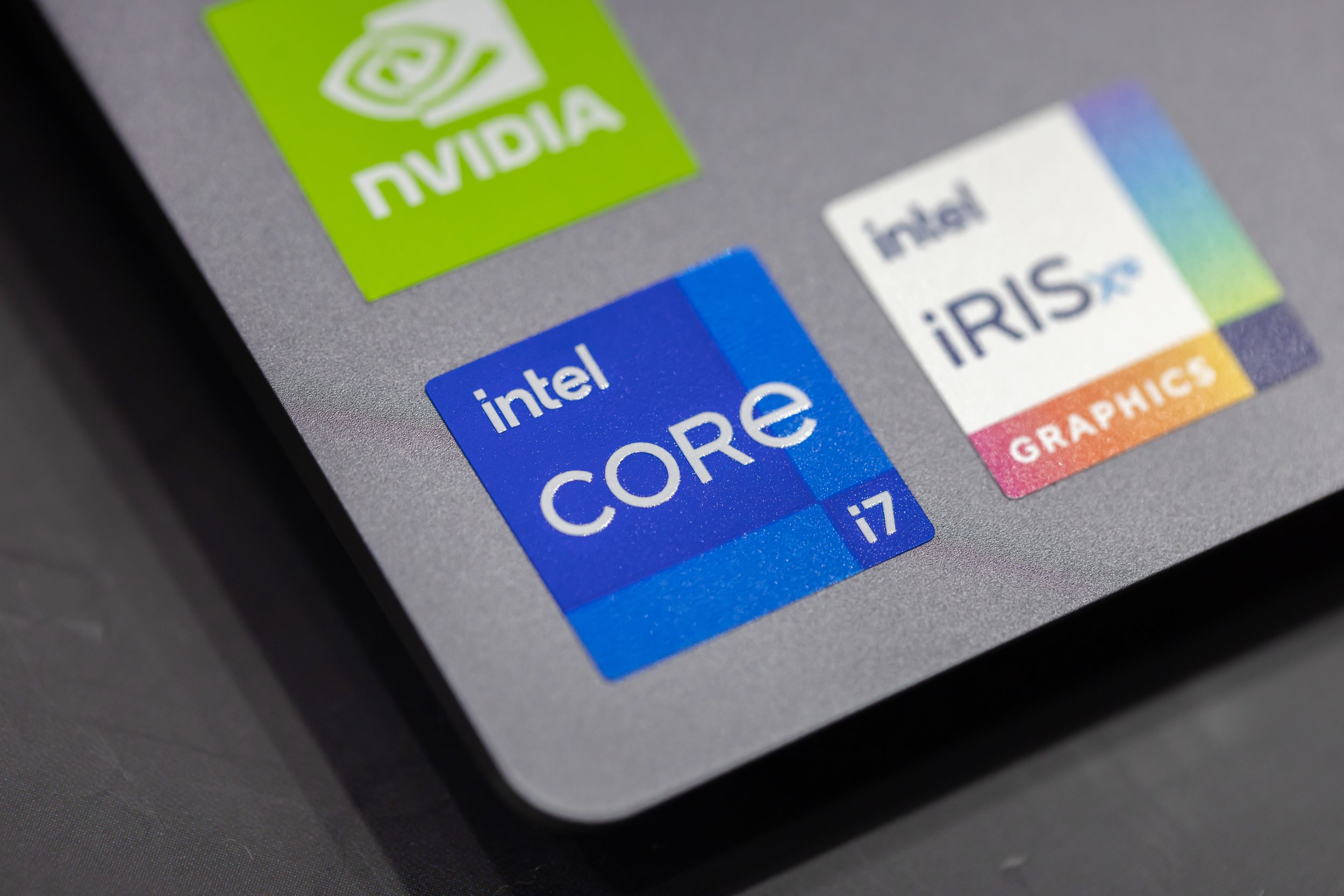Intel Iris Xe Graphics vs Nvidia: Is It Really That Much Faster?
Intel created the first CPU with integrated graphics in 2010. This development marked a major milestone in hardware development. Finally, GPUs could be integrated to create more practical designs. This made the job of manufacturers and PC-building hobbyists easier, as any processor could suddenly run the best graphics.
At least, this is what it should have meant in theory. In practice, integrated graphics was a nuisance more than a perk for many years. Low-resource indie games were fine, but trying to play anything more intensive would be a hassle. At best, the game would run well on low settings. At worst, it wouldn’t boot at all.
For better or worse, Intel has become the poster child for integrated graphics. Intel Xe has largely powered these developments, but the company recently expanded into more discrete graphics cards like the Intel Iris Xe.
Having graphics powered by Intel formerly meant you needed to purchase something to help everything run smoothly. That’s a big reason why Nvidia and AMD have historically been the only major rivals in the world of hardware. Route optimizers and other technological advancements can improve your performance, but a powerful enough graphics card can only help you even more.
Intel’s current GPU roadmap may completely change its company perception in the next few years. For now, we are going to compare Intel’s Iris Xe Graphics to Nvidia’s offerings. Popular wisdom holds that Nvidia is faster, but is it really that much faster?
Intel Iris Xe: What Do We Have Now?
Before we go into detail, we need to emphasize that Intel’s recently released Alchemist chips sport an entirely new architecture and development as far as Intel Xe 3 is concerned. This last offering will launch in 2024, leading to a quick turnaround on the current architecture. These are among the first cards entirely originated for desktop devices.
The first set of current Intel Iris Xe graphics cards used Iris Xe MAX as a baseline for performance. This is important, because the statistics we are about to list may seem punishingly weak to desktop users.
The piece features a maximum clock speed of 1500 MHz or only 1.5 GHz. This maximum clock does not even meet the base clock speed of an out-of-date RTX model. It supports DP 1.4 w/ HDR and HDMI 2.0 and can connect to three displays. It also uses shared RAM rather than dedicated RAM and 68GB/s bandwidth.
However, it is operable with PCIe 4.0 and can connect to four displays. This makes for an extreme data access speed. This also features 10nm SuperFin construction, now that Intel has finally gotten it under control.
This isn't completely terrible as a first offering into the world of graphics cards. To properly judge it, we have to look at what Intel is attempting to offer: An entry-level upgrade.
This item doesn’t hold a candle to Nvidia’s best offerings (as we will soon show), but it isn’t trying to compete. This graphics card gives people a basic graphics card that can run most games at a baseline.
Intel’s actual offensive in the world of GPUs is happening as we speak and will continue for the next few years.
Nvidia: How Does It Compare?
We admit that it’s unfair comparing Nvidia’s top GPUs to the Intel Iris Xe. To this end, we’ll be comparing it to a somewhat weaker offering than the market mainstream. The GeForce RTX 2060 was initially introduced in 2019 but was re-released last year. This puts it in the same calendar year as the Intel Iris Xe.
It features a base clock of 1470Mhz and a boost clock of 1650. This represents a 10 percent enhancement over the previous offering at maximum operating capacity. It also features a bandwidth of 336GB/s and a memory of 12 GB.
The 2060 is far and away the superior offering, despite initially launching earlier than the Intel Iris Xe. However, though the Intel Iris has come from laptops, the 2060 is not fundamentally a graphics card made for them.
To that end, we are going to compare an Nvidia graphics card initially intended for mobile use. The GeForce MX450 was launched in August 2020, half a year before the Intel Iris Xe on desktop. It features the same PCIe 4.0 x 4 bus interface, as well as a boost clock speed of 1575. It also features a bandwidth of 80 GBs and 2 GB of onboard memory.
The GeForce MX450 still comes out ahead by a margin, but it’s a much closer margin than others. Your best-case scenario is only a five percent increase over the Intel Iris, an exceptionally slim margin.
We’ll admit that we’re intentionally comparing weaker graphics cards from Nvidia here, but it’s only fair.
Is Nvidia Really That Much Faster?
On a note-by-note basis, Nvidia is faster than Intel offerings, and the majority of Nvidia offerings in the last few years will be stronger than the Intel Iris Xe. On the other hand, any offering older than three years is liable to be surpassed by Intel’s newest card.
Still, while the Intel Iris Xe gets the job done, it is not an intensive card. It’s a graphics card that lets you play the games you want, but doesn’t do much else besides that. It certainly won’t get you to incredible 4K graphics on newly-released AAA titles.
We might sound too forgiving in our comparisons, but this is because of the standards of the card. Intel isn’t presenting it as a competitor to high-end RTX models. It’s an integrated graphics option turned into a discrete graphics card. It can upgrade out-of-date systems so they can operate, but that’s it.
Right now, Nvidia is faster… much faster. Of course, that might change soon, thanks to the evolution of Intel Arc.
Intel Arc is a new attempt at creating discrete graphics cards to rival Nvidia Geforce and AMD Radeon graphics cards. The first in this line, Alchemist, was just released a little while ago. Battlemage, Celestial, and Druid will be arriving over the next few years.
One of the core figures behind this new series is Rohit Verma, formerly one of AMDs leaders in GPU development. His time with AMD saw them become an incredibly powerful force in the world of graphics cards. Only time will tell if he can do the same with Intel.
An Unfair Comparison: Intel Iris Xe vs Nvidia’s Best Graphics Card
The GeForce RTX 3080 isn’t just one of Nvidia’s best graphics cards. It makes a case for being the best graphics card on the market. It does fall below the RTX 3090 from a performance standpoint, but it should. At nearly half the price of its superior, it only has marginally weaker performance metrics.
It makes full use of PCIe 4 x 16 and GDDR6 busing for the best in data access. It has a bandwidth of 448 GB/s. It features a base core clock speed of up to 1350 and a boosted speed of up to 1710 Mhz. It can render complex textures and lighting effects in a fraction of the time and make them look significantly better.
Most notably, it only features a TDP of 150 Watts despite all this. Power consumption has long been an issue on Intel’s side, and Nvidia has managed to do more with less. This power consumption issue peaked with the 11th gen Rocket Lake processor series and was addressed in the following generation. Presumably, the upcoming processors and graphics cards will further highlight these and lessen the power differential between Intel and its ideal competitors.
By any metric, Intel Iris Xe cannot be compared to the upper-level GeForce RTX 3080. It exceeds its capabilities not just by two figures but by three (and nearly four) in some ways.
Nvidia Is Definitively Faster: Now What?
The Intel Iris Xe is not great by any careful standard. This doesn’t mean you have to flee and run the moment you see a device that has it. You can play older AAA titles and newer, less-intensive games using it. Running in 4K is an impossibility, but you may be able to play new titles with reduced settings.
May is the operative word. This graphics card is far from ideal and is easily outclassed by Nvidia’s modern offerings. For an effective Intel graphics card, look to their latest offerings. These graphics cards are truly made for desktops rather than ported and adjusted mobile pieces.
Tech moves quickly. In just a year, the entire landscape could change. Nvidia and AMD have been the gold standard for graphics cards for years. Intel is returning to the world of discrete graphics cards after a years-long break. The future is anyone’s game.
WTFast is here to catalog every evolution. Whether it be new hardware updates or latency-reducing software, we are here to offer information on all gaming concerns.



